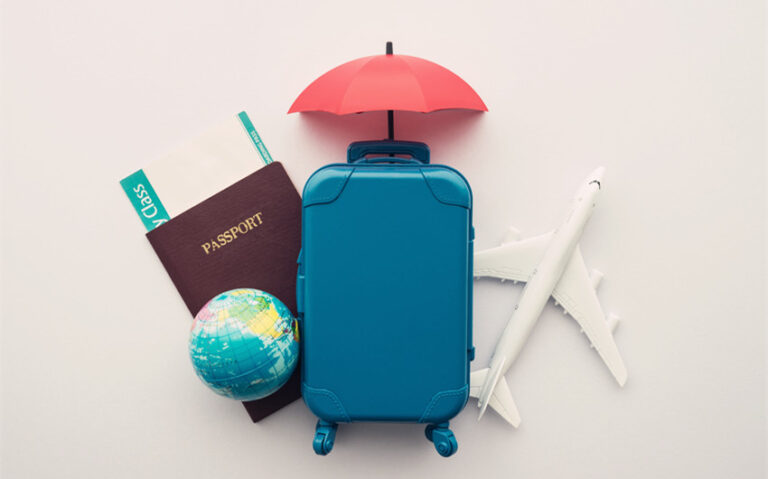Do You Need a Passport to Go to Hawaii? Here’s the Real Answer
I remember the first time I booked a trip to Hawaii. The volcanoes, the beaches, the road to Hana—it all felt like traveling to a different country. Somewhere between booking the flight and packing my sandals, one basic question popped into my head: “Do I need a passport to go to Hawaii?”
If you’re asking the same thing, here’s the simple answer: not if you’re a U.S. citizen. But the full story depends on where you’re coming from, what kind of ID you have, and how soon you’re flying. Let’s break it down.
1. U.S. Citizens Don’t Need a Passport to Travel to Hawaii
Hawaii is the 50th state of the United States. Even though it’s in the middle of the Pacific Ocean and feels like a world away, it’s still domestic travel. That means U.S. citizens flying from any other U.S. state or territory do not need a passport to visit.
Instead, you’ll just need a valid government-issued photo ID. Most people use a driver’s license or state ID to get through airport security. You’ll check your bags, board your flight, and land in Honolulu just like you would in Miami or Los Angeles—no customs, no passport stamp, no questions asked.
This applies even if you’re flying from the mainland to the Big Island, Kauai, Maui, or any of the smaller Hawaiian islands. It’s all considered part of the United States for travel purposes.
2. Starting in 2025, You’ll Need a REAL ID to Fly Domestically
Here’s a big change to keep in mind: beginning May 7, 2025, the TSA will require all U.S. travelers to present a REAL ID-compliant form of identification to board domestic flights, including to Hawaii. This rule applies to everyone 18 and older.
A REAL ID looks like a regular driver’s license but has a star in the upper corner. Without that star, your ID won’t be accepted at airport security once the rule takes effect. If your license isn’t compliant, you’ll need to bring a passport or another TSA-approved form of ID instead.
You can check with your state’s Department of Motor Vehicles to see if your current ID qualifies. If not, apply for a REAL ID upgrade well before your travel date—it often requires documentation like a birth certificate or Social Security card.
3. Hawaii Is a State, Not a U.S. Territory
It’s easy to confuse Hawaii with other tropical places associated with the United States, like Guam, Puerto Rico, or the U.S. Virgin Islands. But Hawaii is different. It’s a fully incorporated state, with the same status as California or Texas.
This means no immigration checks, no customs forms, and no foreign exchange. The currency is U.S. dollars, and your phone plan, credit cards, and insurance usually work the same as they do at home. Flying to Hawaii feels a lot like flying cross-country—except the views are better, and the air smells like salt and flowers when you land.
4. International Travelers Will Need a Passport to Enter
If you’re not a U.S. citizen, you will need a passport to visit Hawaii. That’s because all international visitors must follow standard U.S. immigration laws, regardless of which state they’re entering. Hawaii might feel like an island escape, but for international arrivals, it’s no different than landing in New York or Chicago.
Depending on your country, you might also need a visa or an approved ESTA (Electronic System for Travel Authorization) under the Visa Waiver Program. Check the U.S. State Department website or speak with your local embassy to understand what documents you’ll need before flying.
And remember—your passport must be valid for the duration of your trip. Some countries require at least six months of validity beyond your return date, so always double-check before booking.
5. What If You’re Traveling with Kids?
For families traveling together, especially with young children, the rules are simple but important. U.S. citizens under 18 do not need a passport to fly to Hawaii. However, children over the age of 18 must have a valid ID just like any adult.
If your child is under 18 and flying alone or with only one parent, some airlines may require additional documentation like a notarized letter of consent. It’s rare but worth checking ahead—especially on longer routes or with connecting flights.
Even if a passport isn’t required, it’s always a good idea to carry a copy of your child’s birth certificate or school ID for identification. And if you’re an international visitor traveling with a child, you’ll both need valid passports and visas where applicable.
6. Helpful Travel Tips for Visiting Hawaii
Even though you don’t need a passport, Hawaii isn’t your average weekend getaway. It’s far—around 5 to 6 hours from the West Coast—and deserves some thoughtful planning. Here are a few things to keep in mind before you go:
- Book early: Flights and accommodations fill up fast, especially during holidays and summer breaks. The earlier you plan, the better your prices and options.
- Time zone shift: Hawaii Standard Time is 2–5 hours behind the U.S. mainland, depending on where you’re flying from. Give yourself a day to adjust if you’re planning anything physical like hiking or surfing.
- No Daylight Saving Time: Hawaii doesn’t observe Daylight Saving Time, which can cause extra confusion when traveling in March or November.
- Pack smart: Light clothing, reef-safe sunscreen, reusable water bottles, and flip-flops are your best friends. Don’t forget a light jacket or sweater—especially if you’re visiting higher elevations like Haleakalā or Mauna Kea.
7. So, Do You Need a Passport to Go to Hawaii?
If you’re a U.S. citizen flying from another U.S. state, the answer is no. Hawaii is domestic travel, and your regular state-issued ID is all you need—at least until May 2025, when REAL ID rules kick in.
If you’re traveling from another country, you’ll need your passport just like any other U.S. entry. And if you’re planning to island-hop while you’re there, all flights between Hawaiian islands are also domestic—no additional ID or paperwork needed beyond your boarding pass.
So breathe easy. Your beach, your lei, your slow walk under a banyan tree—they’re all waiting. And you won’t need a passport to get there.







